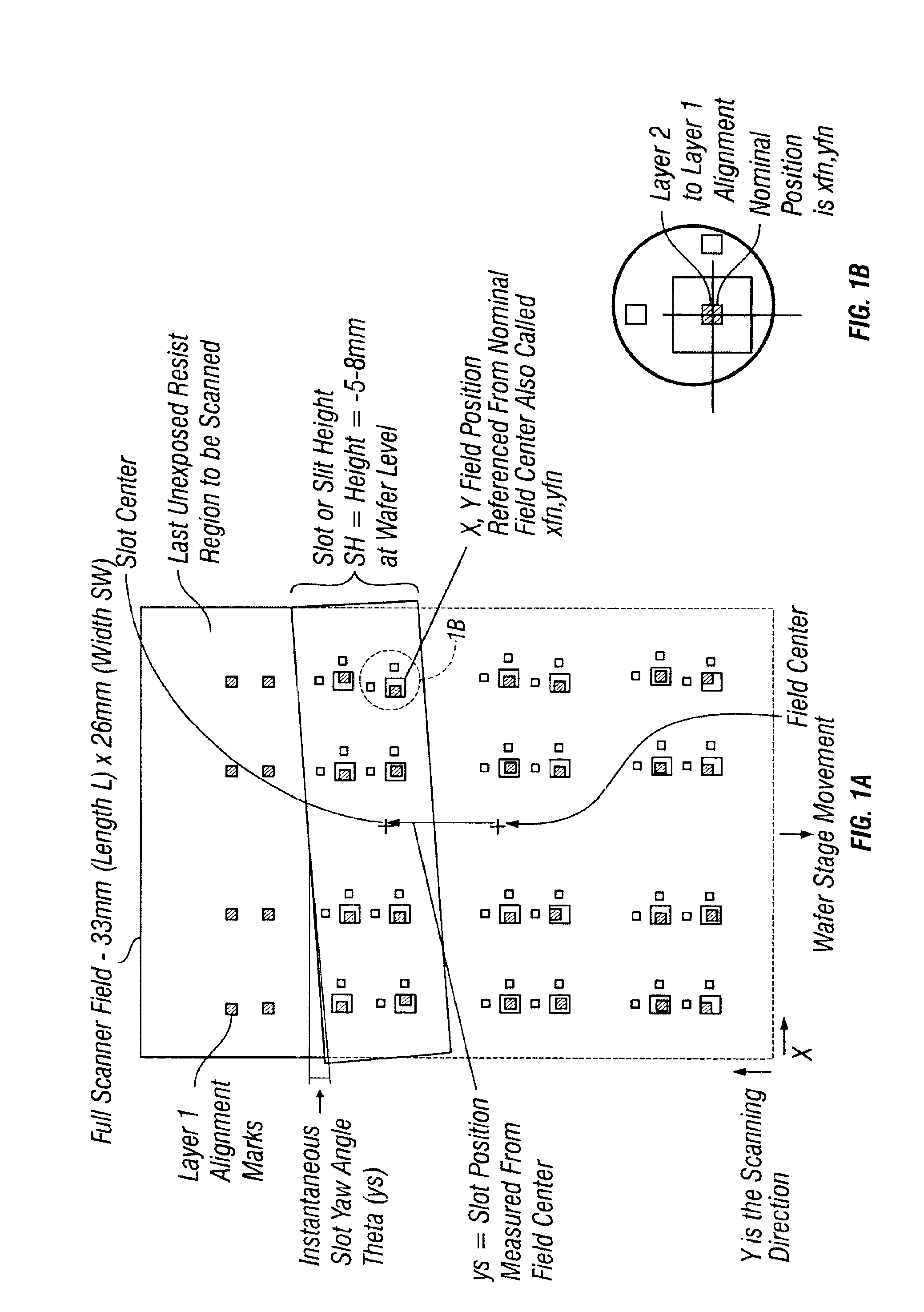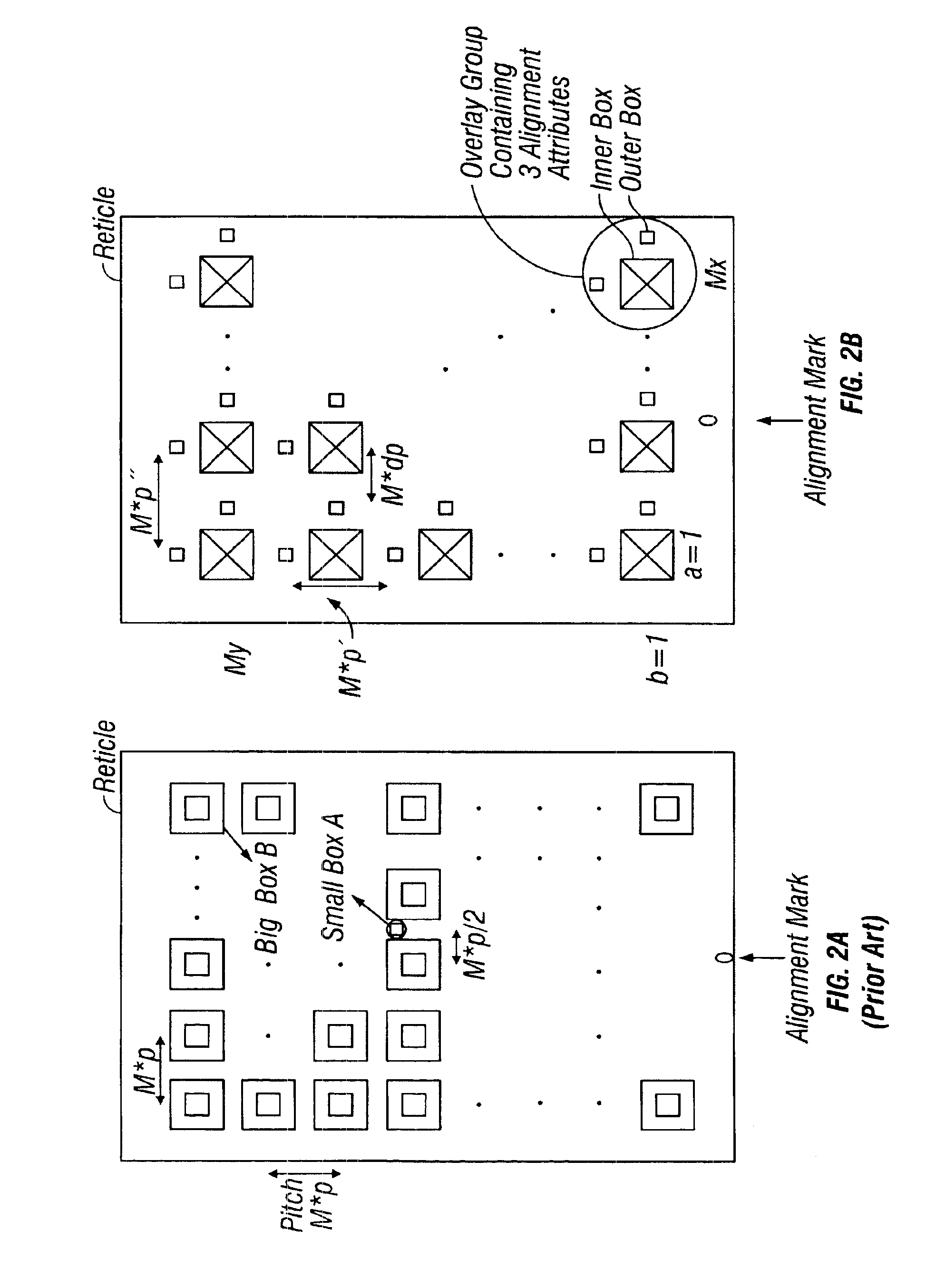Method and apparatus for self-referenced dynamic step and scan intra-field lens distortion
a dynamic step and lens distortion technology, applied in the field of optical metrology, can solve the problems of reducing the feature size of the device, affecting the alignment accuracy of the exposure tool system, and corrupting the calibration procedure of the exposure tool
- Summary
- Abstract
- Description
- Claims
- Application Information
AI Technical Summary
Benefits of technology
Problems solved by technology
Method used
Image
Examples
Embodiment Construction
Overview
[0072]Overlay error is often referred to as registration error or pattern placement error, or simply error. Overlay error is typically classified, or divided, into the following two categories: grid or inter-field and intra-field error. Intra-field error is the overlay error in placement within a projection field, or simply field, of a lithographic projection system. Inter-field error is the overlay error from field to field on the wafer. Examples of intra-field error are illustrated in FIG. 20, and examples of inter-field errors are illustrated in FIG. 19. For photolithographic scanners the physical sources of these errors are generally distinct, with intra-field errors due to static projection lens aberrations and / or scanning dynamics while inter-field errors are due to the wafer alignment system, wafer stage and the reticle stage. An aspect described below, is determination of intra-field error produced by the lens or imaging objective optics associated with photolithogra...
PUM
 Login to View More
Login to View More Abstract
Description
Claims
Application Information
 Login to View More
Login to View More - R&D
- Intellectual Property
- Life Sciences
- Materials
- Tech Scout
- Unparalleled Data Quality
- Higher Quality Content
- 60% Fewer Hallucinations
Browse by: Latest US Patents, China's latest patents, Technical Efficacy Thesaurus, Application Domain, Technology Topic, Popular Technical Reports.
© 2025 PatSnap. All rights reserved.Legal|Privacy policy|Modern Slavery Act Transparency Statement|Sitemap|About US| Contact US: help@patsnap.com



